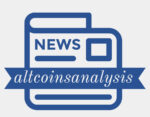Tether avoids licenses, prioritizing Asia, while USDC seeks approvals to dominate Europe by 2025.
OKX and Uphold eliminate USDT in the EU, complying with MiCA limits, affecting cryptoasset liquidity.
The entry into force of the Markets in Cryptoassets Regulation (MiCA) on December 30, 2024, has marked a transformative milestone for the cryptofinance sector. This regulatory framework, designed to harmonize rules in the European Union (EU) on the issuance, public offering and admission to trading of cryptoassets, including stablecoins and other tokens, is generating significant ripples in the market.
Among the most debated implications, MiCA’s relationship with Tether (USDT), the most widely used stablecoin globally, has captured the attention of cryptofinancial analysts and exchanges in 2025.
MiCA establishes a strict regime for cryptoasset issuers and service providers, particularly stablecoins, which must comply with authorization, transparency and oversight requirements to operate legally in the EU.
Under Article 143 of the regulation, entities already offering cryptoasset services under national laws have a transition period until July 1, 2026 to align with the new standards, but reference stablecoins (such as USDT) face immediate challenges due to issuance limits and licensing requirements as e-money tokens.
A recent analysis published in January 2025 by cryptofinancial analyst Bitblaze, shared on platforms such as X, highlights that Tether has opted not to seek an e-money license or partner with MiCA-compliant European banks, citing “unfair regulations.”
This reflects Tether’s strategy of prioritizing markets outside the EU, especially in Asia, where regulations are more permissive.
Bitblaze stressed in its tweet:
“Tether’s largest market is in Asia; MiCA does not significantly affect its business in 2025, but could limit its presence in Europe.”
Tether’s decision has triggered reactions in the cryptofinancial ecosystem. Exchanges such as OKX and Uphold have clamped down on MiCA compliance. In March 2024, OKX announced the removal of USDT trading pairs in the EU, although it maintained support for other stablecoins such as USDC and euro-based pairs.
Uphold, meanwhile, discontinued support for USDT in 2024, along with other stablecoins such as Dai (DAI) and Frax Protocol (FRAX), conforming to MiCA restrictions on unauthorized stablecoins. These moves illustrate how MiCA is forcing platforms to reconfigure their digital asset offerings to avoid regulatory penalties.
However, uncertainty persists. An ETHNews analysttweet in March 2025 noted:
“MiCA imposes issuance limits on stablecoins; USDT exceeds €200 million and 1 million daily transactions, but its metrics are confusing, leaving exchanges in regulatory limbo.”
This point highlights a key challenge: the lack of clarity in how transaction and total value thresholds are measured under MiCA, which creates dilemmas for issuers and exchanges operating with USDT in EuropeTether avoids licenses, prioritizing Asia, while USDC seeks approvals to dominate Europe by 2025.
OKX and Uphold eliminate USDT in the EU, complying with MiCA limits, affecting cryptoasset liquidity.
The entry into force of the Markets in Cryptoassets Regulation (MiCA) on December 30, 2024, has marked a transformative milestone for the cryptofinance sector. This regulatory framework, designed to harmonize rules in the European Union (EU) on the issuance, public offering and admission to trading of cryptoassets, including stablecoins and other tokens, is generating significant ripples in the market.
Among the most debated implications, MiCA’s relationship with Tether (USDT), the most widely used stablecoin globally, has captured the attention of cryptofinancial analysts and exchanges in 2025.
MiCA establishes a strict regime for cryptoasset issuers and service providers, particularly stablecoins, which must comply with authorization, transparency and oversight requirements to operate legally in the EU.
Under Article 143 of the regulation, entities already offering cryptoasset services under national laws have a transition period until July 1, 2026 to align with the new standards, but reference stablecoins (such as USDT) face immediate challenges due to issuance limits and licensing requirements as e-money tokens.
A recent analysis published in January 2025 by cryptofinancial analyst Bitblaze, shared on platforms such as X, highlights that Tether has opted not to seek an e-money license or partner with MiCA-compliant European banks, citing “unfair regulations.”
This reflects Tether’s strategy of prioritizing markets outside the EU, especially in Asia, where regulations are more permissive.
Bitblaze stressed in its tweet:
“Tether’s largest market is in Asia; MiCA does not significantly affect its business in 2025, but could limit its presence in Europe.”
Tether’s decision has triggered reactions in the cryptofinancial ecosystem. Exchanges such as OKX and Uphold have clamped down on MiCA compliance. In March 2024, OKX announced the removal of USDT trading pairs in the EU, although it maintained support for other stablecoins such as USDC and euro-based pairs.
Uphold, meanwhile, discontinued support for USDT in 2024, along with other stablecoins such as Dai (DAI) and Frax Protocol (FRAX), conforming to MiCA restrictions on unauthorized stablecoins. These moves illustrate how MiCA is forcing platforms to reconfigure their digital asset offerings to avoid regulatory penalties.
However, uncertainty persists. An ETHNews analysttweet in March 2025 noted:
“MiCA imposes issuance limits on stablecoins; USDT exceeds €200 million and 1 million daily transactions, but its metrics are confusing, leaving exchanges in regulatory limbo.”
This point highlights a key challenge: the lack of clarity in how transaction and total value thresholds are measured under MiCA, which creates dilemmas for issuers and exchanges operating with USDT in Europe




